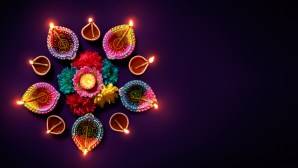Unveiling the Unique Artistic Styles of Frida Kahlo and Diego Rivera
Frida Kahlo and Diego Rivera are two of the most renowned Mexican artists of the 20th century. Their works have left an indelible mark on the art world, with their unique artistic styles capturing the attention and admiration of people worldwide. While both artists were deeply influenced by Mexican culture and history, they had distinct approaches to their craft. In this article, we will delve into the artistic styles that set Frida Kahlo and Diego Rivera apart from each other.
I. Frida Kahlo: The Intimate Self-Portraits
Frida Kahlo’s artistic style can be best described as introspective and deeply personal. She is famous for her self-portraits that depict her physical and emotional pain, as well as her identity as a woman. Kahlo often included symbolic elements in her paintings to convey her thoughts and experiences.

One notable aspect of Kahlo’s style is her use of vibrant colors. Her paintings are filled with bold hues that reflect the rich Mexican culture she grew up in. Additionally, she frequently incorporated elements of traditional Mexican folk art into her work, such as intricate patterns and indigenous motifs.
Kahlo’s self-portraits also reveal her fascination with surrealism. She often depicted herself in dreamlike scenarios or surrounded by fantastical objects, blurring the lines between reality and imagination. Through these surreal elements, she explored themes of identity, gender roles, and cultural heritage.
II. Diego Rivera: The Grand Murals
Diego Rivera’s artistic style differs significantly from that of Frida Kahlo. While both artists shared a passion for showcasing Mexican culture, Rivera’s approach was more monumental in scale. He is best known for his large-scale murals that adorn public spaces across Mexico.
Rivera’s murals are characterized by their social and political messages. He used his art to address issues of inequality, revolution, and the struggles of the working class. His paintings often featured scenes of everyday life, paying homage to the common people and their contributions to society.
One defining aspect of Rivera’s style is his meticulous attention to detail. His murals are filled with intricate patterns, historical references, and realistic portrayals of people and landscapes. He believed that art should be accessible to everyone, and his murals aimed to educate and inspire the masses.
III. Contrasts and Influences
Despite their distinctive artistic styles, Frida Kahlo and Diego Rivera’s lives were deeply entwined. They were married for a significant part of their careers, influencing each other’s work in profound ways.
Kahlo’s intimate self-portraits often depicted herself alongside Rivera or referenced him symbolically. Her paintings reflected her tumultuous relationship with him, as well as her own struggles with physical pain and emotional trauma.
Rivera’s influence on Kahlo can be seen in her use of bold colors and incorporation of Mexican folk art elements. He encouraged her to embrace her cultural heritage in her work and supported her exploration of personal themes.
IV. The Enduring Legacy
Today, the artistic styles of Frida Kahlo and Diego Rivera continue to captivate audiences worldwide. Their works are celebrated for their unique perspectives on Mexican culture, identity, and social issues.
Kahlo’s self-portraits have become iconic symbols of resilience and self-expression. Her ability to convey raw emotions through art has inspired generations of artists who seek to explore their own identities through their work.
Rivera’s grand murals continue to inspire awe with their scale, detail, and powerful messages. His dedication to social justice through art has left a lasting impact on the world of public art.
In conclusion, Frida Kahlo’s introspective self-portraits filled with vibrant colors and symbolic elements stand in contrast to Diego Rivera’s grand murals that address social and political issues on a monumental scale. Both artists have made significant contributions to the art world, leaving behind a lasting legacy that continues to inspire and captivate audiences today.
This text was generated using a large language model, and select text has been reviewed and moderated for purposes such as readability.


